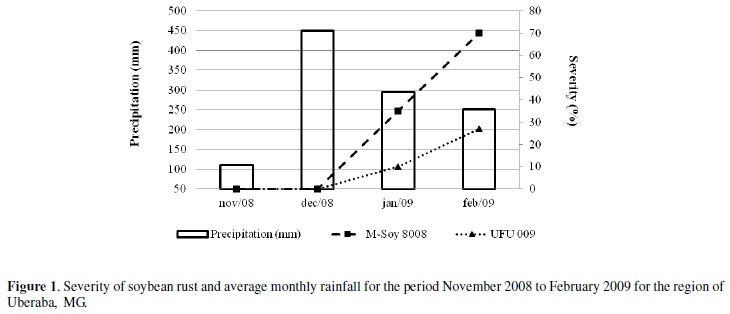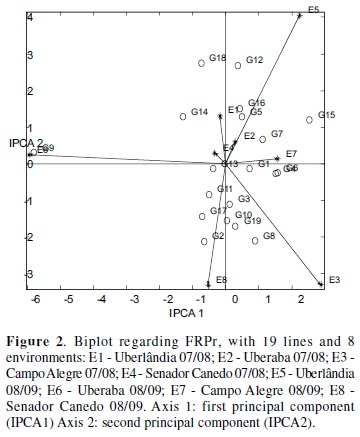This research work was carried out to verify the adaptability and phenotypic stability of soybean inbred lines of semi early cycle, using rust severity as the selection trait for partial resistance. The strains were evaluated during the growing seasons of 2007/08 and 2008/09, in the locations of Uberlândia and Uberaba, MG, Campo Alegre de Goiás and Senador Canedo, GO, using a randomized complete block design with three replications. Rust severity was evaluated by visual assessment of the leaflets at the medial third of five plants in each plot. By using disease severity, it was estimated: the mean absolute rate of disease progress (r), the area under the disease progress curve (AUDPC) and the partial resistance factor (PRF). Adaptability and stability of the strains were estimated by the methods proposed by Eberhart and Russell, as well as by the AMMI method. It was found that the strains which were the most resistant to rust, in general, also showed the best adaptability and stability.
Glycine max; Phakopsora pachyrhizi; partial resistance; mean absolute rate of disease progress; partial resistance factor








